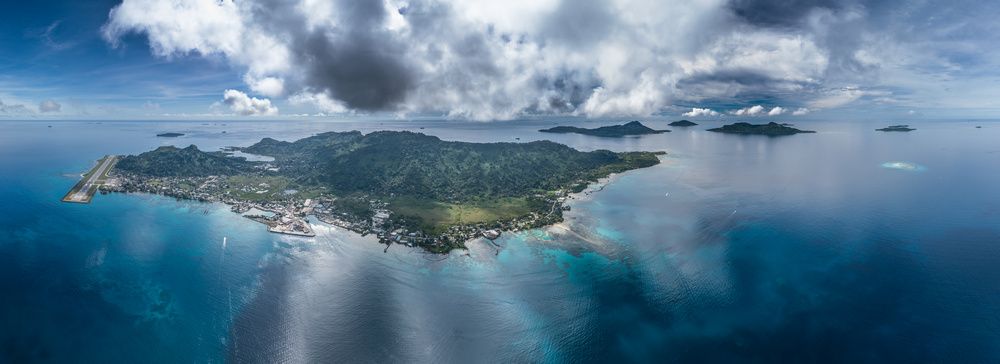
Data report tracks SIDS connectivity successes and challenges
ITU’s latest statistics and analysis show where the world’s island economies stand in their journey to universal and meaningful connectivity
By Cosmas Luckyson Zavazava, Director of the Telecommunication Development Bureau, ITU
Internet use in the world’s 57 small island developing states and territories – or SIDS – has outpaced the world average over the past decade.
SIDS Internet use grew by 8.4 per cent annually between 2014 and 2023, surpassing the global annual growth rate of 6.7 per cent.
This comparatively rapid uptake is clear in our report Facts and Figures: Focus on Small Island Developing States, issued today, 5 March.
The report captures SIDS digital development trends between 2014, when the United Nations convened the Third International Conference on Small Island Developing States (SIDS3), and this year’s upcoming SIDS4, to be held in Antigua and Barbuda from 27 to 30 May.
Digital connectivity is crucial in mitigating the challenges faced by SIDS. By enabling access to information, facilitating communication, and creating economic opportunities, it can improve disaster response, management, and access to critical services, often constrained by geographic and resource limitations in SIDS.
SIDS-specific challenges
Two thirds (67 per cent) of the SIDS population was online by 2023, in line with the world’s average, confirming high demand for information and communication technology (ICT) services in the SIDS. However, infrastructure, capacity and affordability remain key barriers to connectivity.
For example, only 85 per cent of the of the SIDS population was within reach of a mobile broadband network, well below the global average of 95 per cent, while in rural areas of SIDS, only 43 per cent of the population had access to a 4G signal.
The price of an entry-level fixed-broadband basket in a typical SIDS was about 46 per cent above the world’s median price, while the price of the data-only mobile broadband was almost twice that of the world’s median.
Most SIDS grapple with common challenges, such as remoteness, limited markets, narrow economic bases, and high costs for energy and infrastructure. Furthermore, they are highly vulnerable to climate change impacts.
Even so, they are an extremely diverse group in terms of digital development.
Insights on e-trade and digital governance
This special edition of Facts and Figures features a contribution from the United Nations Conference on Trade and Development (UNCTAD) on e-trade. This highlights the interconnectedness of digital infrastructure and the global marketplace and how e-commerce can serve as a catalyst for sustainable development in SIDS. I express my sincere gratitude to UNCTAD for this insightful piece.
Furthermore, a section on regulation and digital governance frameworks provides an overview of the status of ICT regulation in SIDS around the world.
Where SIDS need to go
Understanding our current location is necessary, but it’s only a first step to reach our intended destination.
In addition to the assessment offered by the Facts and Figures series, ITU addresses SIDS’ specific needs through multiple initiatives. Among these are Smart Islands, universal meaningful connectivity for all, early warning systems for all, skills development, cybersecurity, and the design of national emergency telecommunication plans.
Through collaborative efforts and sharing knowledge and best practices, we are determined to hasten strides toward universal and meaningful connectivity. Let’s acknowledge SIDS’ successes and reaffirm our dedication to a connected, sustainable future for every island.
Key findings from the report
SIDS display a glaring Internet usage gap: 18 per cent of the population in the SIDS had access to the Internet but did not use it.This usage gap results from various barriers, including the lack of affordability, digital skills, and of relevant content.
Connectivity in SIDS displayed a stark contrast between rural and urban populations: the urban population was almost twice as likely to use the Internet as the rural population (84 per cent compared with 44 per cent).
Mobile-broadband and fixed broadband penetration in SIDS lagged behind the world average: SIDS reported 63 mobile-broadband subscriptions per 100 people, compared with 87 subscriptions per 100 people globally, and just 10 fixed-broadband subscriptions per 100 inhabitants, about half the global figure of 19 per 100.
74 per cent of individuals in SIDS owned a mobile phone – close to the global average of 78 per cent.
Only 85 per cent of the of the population in SIDS was within reach of a mobile broadband network (3G or above) – well below the global average of 95 per cent.
The median price of mobile Internet was 94 per cent higher than world’s median.
Read the report: Facts and Figures: Focus on Small Island Developing States
Discover what others are saying and join the conversation: #ITUdata
Image credit: Adobe Stock
